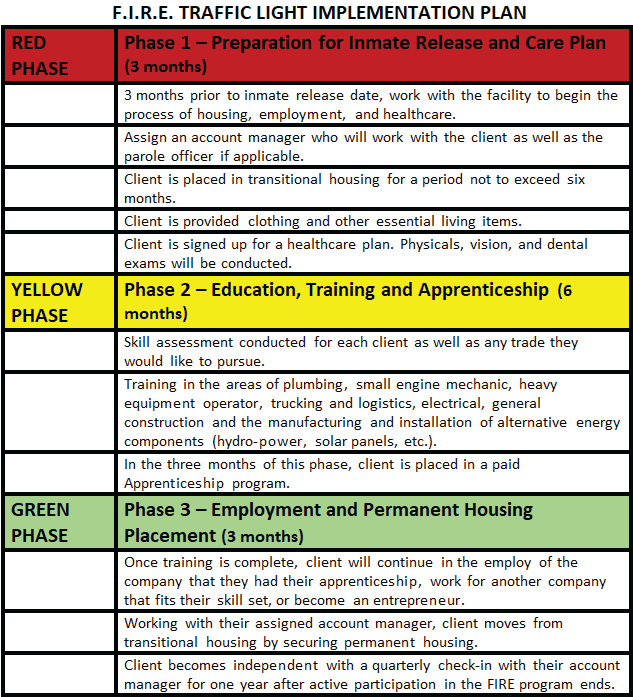
(F.I.R.E.) FORMER INMATES REENTRY EDUCATION
The United States has the highest incarceration rate in the world. This is despite the national incarceration rate being at its lowest in 20 years. About 25% of the world’s total prison population is in the U.S., which holds about 2.19 million prisoners as of 2019. Mass incarceration has led to several problems. Among these are overcrowded prisons, which lead to increased health risks and decreased psychological well-being.
These 2 million incarcerated people are housed in 1,566 state prisons, 102 federal prisons, 2,850 local jails, 1,510 juvenile correctional facilities, 186 immigration detention facilities, and 82 Indian country jails, as well as in military prisons, civil commitment centers, and state psychiatric hospitals. That equals 437 for every 100,000 adults.
The ten states with the highest prison populations in the country are Texas (154,749), California (122,417), Florida (96,009), Georgia (54,113), Ohio (50,338), Pennsylvania (45,485), New York (43,439), Arizona (40,951), Illinois (38,259), and Michigan (38,053). In terms of imprisonment rate per 100,000 people, Louisiana, Oklahoma, and Mississippi have the highest rates, 680, 639, and 636, respectively. F.I.R.E. programs will be conducted in California, with the initial pilot program in Lake County.
According to an article dated 9/6/2022 in the San Francisco Chronicle, a groundbreaking new study shows that the Bay Area sends a smaller share of residents to prison than California as a whole, while some rural, more conservative communities far surpass the state average.
San Francisco’s incarceration rate was 118 residents imprisoned per 100,000 residents during the 2020 U.S. Census, compared to 310 per 100,000 statewide, but the new analysis found that nine communities in the city have rates rivaling the state average. Among the highest rates were in Bayview, Hunters Point, Sunnydale and Silver Terrace — all historically lower-income and nonwhite.
Yet, even in San Francisco, which has one of the state’s lowest prison incarceration rates, the statistics can vary greatly by neighborhood, according to data released by the nonprofit think tank Prison Policy Initiative. The numbers hint at the legacy of discriminatory housing policies and economic inequality, and their lingering consequences for people who get swept up in the criminal legal system.
Leave the Bay Area and the incarceration rate can balloon, the research shows. Los Angeles County, home to 10 million people, had an imprisonment rate of 402 per 100,000, and the populous nearby counties of Riverside, San Bernardino and Orange tend to send the most people to prison in the state in raw numbers.
Meanwhile, a number of rural and largely conservative counties in the Central Valley and far Northern California have disproportionately high rates of incarceration. Kings County, with a population of 200,000, had the highest incarceration rate in the state, with 666 people in state prison per 100,000, researchers found. Tulare County to the east, which had the state’s third-highest homicide rate last year, 8.8 homicides per 100,000 residents, had an imprisonment rate of 474 people per 100,000. Far north, rural counties including Shasta (663), Tehama (556), Yuba (510) , Siskiyou (480), Lake (480) and Del Norte (473) each have incarceration rates more than 1.5 times higher than the state.
On some Native American lands, the researchers found elevated incarceration rates. The Fort Mojave Reservation in Southern California and Big Valley Rancheria in Lake County both have imprisonment rates more than five times that of Los Angeles. In Humboldt County’s sparsely populated Rohnerville Rancheria, the incarceration rate is 10 times the state average.
S.W.I.M. is currently developing collaborative relationships with organizations throughout surrounding counties to Lake as well as the Bay Area at large. In Oakland, California, a novel housing program links people recently released from long-term prison sentences with hosts willing to rent space in their homes. The principle aim of mission of F.I.R.E. is to lower and prevent recidivism. Innovative programs such as this one in Oakland are models that we wish to collaborate with during the process of leaving transitional to more permanent housing. By providing our clients with the tools necessary to not only survive, but to strive and avoid recidivism.
Recidivism is a major problem in the prison system and this has exacerbated the problem by adding to overcrowded incarcerated facilities. SWIM addresses this problem through our F.I.R.E. (Former Inmates Reentry Education) Traffic Light Implementation Plan. The components of F.I.R.E. are divided into a one-year, three-phase process as depicted in the Traffic Light diagram below.


